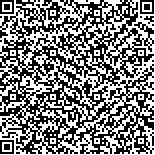下载中心
优秀审稿专家
优秀论文
相关链接
摘要

近年来重大自然灾害频发,给世界各国造成了重大经济损失和人员伤亡,空间信息技术在自然灾害救助中发挥越来越重要的作用."5·12"汶川地震灾害发生后.全国相关涉灾部门充分利用空间信息技术为汶川地震救灾提供科学有效的决策支持,在灾害应急响应中发挥了巨大的作用.从地震灾害快速响应的空间信息需求以及汶川地震救灾的空间信息技术支持2个角度,从高时空分辨率遥感数据获取、遥感数据快速处理、灾害信息变化检测与次生灾害监测等3个方面,分析了空间信息技术在救灾中具体发挥的作用.总结了空间信息技术辅助汶川地震救灾中的经验和教训,为今后空间信息如何更好地服务于自然灾害救助,提出了中国空间信息技术发展的思路与建议.
In recentyears, there have beenmany catastrophic disasters occurred in China and other countries,which has caused great losses of lives and assets. Spatial information techniques, including, are playingmore andmore mi portantroles in disastermitigation.An earthquake,measured 8.0 on the Richter scale, struck Wenchuan County,Sichuan Province at 14∶28 on May 12,2008,and has resulted in a series of catastrophes.Differentdepartments involved in disastermitigation have used spatial information techniques to provide decision-making supportand contributed a lot to the earthquake relie.f Besides the prompt response to the disaster, the amountof spatial information collected in this earthquake and the number of specialists in related fields involved in the disastermitigation are unprecedented.The rapid response action, as a classic case, can provide a very helpful reference and example for future disastermitigation with the help of spatial information techniques.Firstly, the requirementsofspatial information techniques in rapid response to the earthquake are identified, in- cluding airborne/space-borne opticaland SAR RS data in high spatio-temporal resolution, geometric positioning in high accuracywithoutGCPs or few GCPs, real tmi eear-real tmi e data processing, and well prepared spatial data of infrastruc-tures in earthquake area.Disastermitigation can be classified into threemain phases,which focus respectively on rescue of people buried under the ruins,monitoring of the secondary disasters such as land slides,mud flows and quake lakes, and disaster reconstruction planning. In such different phases, spatial information techniquesmay play different roles.To acquire sufficient space resources, the InternationalCharter“Space and MajorDisasters”is activated by its authorized user NDRCC to obtain foreign satellitesdata,while the national resource satellitesBeijing-1 andCBERS are being operated continuously.More than 130 scenes of satellite mi ages are received through the Charter.On the otherhand, the advanced airborne sensors such asLeicaADS40,Z/I ImagingDMC, and SWDC-4 are involved tomonitor the detailed information about the earthquake. Leica ADS40 has been mostwidely used in damage information extraction for its convenient processing method and integrated operation environment. SWDC-4, the best airborne digitalmapping cameramade in China, has also been running stably during the disaster relie.f The airborne SAR sensors have shown their flexibility to theweather condition and achievedmostvolumes ofdata in its average 11 hours flightperday.However, its data processing speed is in urgentneed of mi provement. Secondly, the rapid processing technique for differentRS data is the key step in the course of disaster rapid response.The satellite ortho-rectified method based on RPC model showed a good accuracy in the satellite RS mi age processing only with few GCPs, though the disaster area has extremely diversified terrains and was heavily changed by the earthquake.As for the airborneRS data processing, the rapid mi agematching andmosaicmethods used in DPGrid successfully solved the problem of irregular flight line and greatrolling stereo mi age pairs.The mi age dodging technique can enhance the visibility and interpretation effectofmosaic resultsofairborne mi ages.Geododging, a software package of mi age dodging developed byWuhanUniversity haspresented good performance.Thirdly, the damage information extraction and secondary disastermonitoring are twomain applications of spatial information techniques in the earthquake rapid response.Two advanced mi age change detection techniques have been used.One is change detection with mi ages from different sensors.And the other ismono-miages change detection according to the spatial shape information based on the object-oriented segmentation.Both can remedy the deficiency of mi age source and mi prove themonitoring speed.The optical mi age data and airborne LIDAR data are both used in the secondary disastermonitoring.Three procedures aswatershed segmentation, runoffprediction by distributed hydrologicmodels, and storage calculation ofQuakeLake are integrated tomonitor the dangerous conditions of theQuake Lake dam.Finally some conclusions and suggestions are proposed to direct future disaster rapid response.

